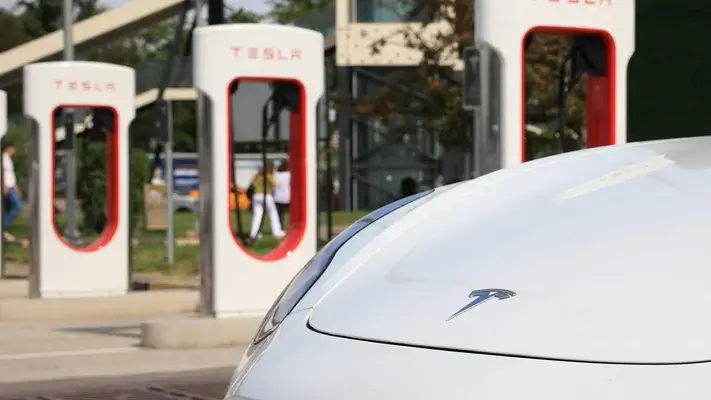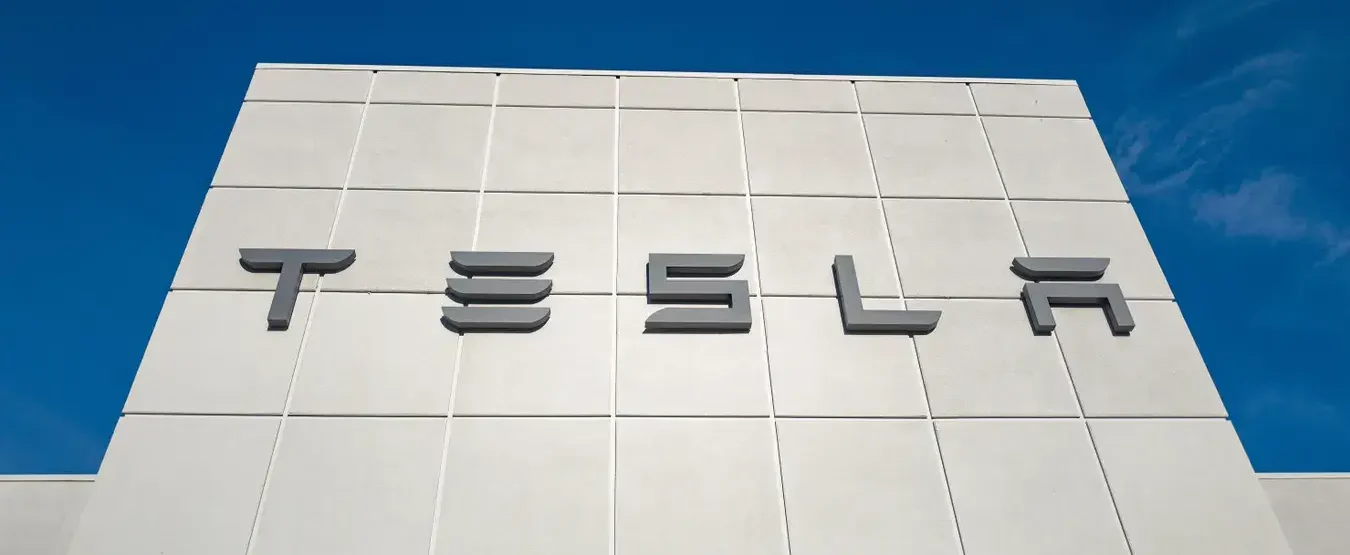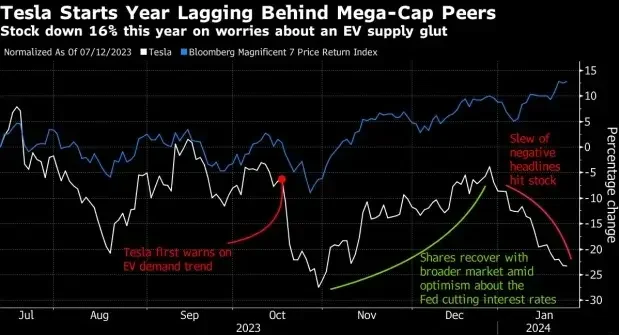The electric vehicle (EV) market is experiencing a seismic shift as environmental concerns and technological advancements drive the demand for sustainable transportation. With the global push to reduce carbon emissions and combat climate change, EVs have emerged as a viable alternative to traditional combustion engine vehicles. This shift in consumer preferences has created a unique opportunity for companies like Tesla to establish themselves as frontrunners in the industry.
The EV market dynamics are undergoing a significant transformation as more traditional automakers enter the space, attempting to catch up with Tesla’s established dominance. This has resulted in increased competition, innovation, and a rapid expansion of EV infrastructure. Governments around the world are also introducing policies and regulations to incentivize the adoption of EVs, further accelerating market growth.
Despite the challenges posed by established automakers, Tesla has managed to maintain its position as the leader in the EV market. Through their relentless commitment to innovation and forward-thinking technologies, Tesla has not only revolutionized the industry but also captured the imagination of consumers worldwide.
Key factors influencing the shift in EV market dynamics
Several key factors have contributed to the shift in EV market dynamics. First and foremost, the growing awareness and concern about the environmental impact of traditional vehicles have prompted consumers to seek greener alternatives. EVs offer a sustainable solution by producing zero tailpipe emissions and reducing reliance on fossil fuels.
Technological advancements have also played a crucial role in driving the shift. Tesla’s cutting-edge battery technology, range improvements, and charging infrastructure have addressed some of the major concerns associated with EVs, such as limited range and access to charging stations. As these advancements continue, the barriers to EV adoption are gradually being overcome.
Additionally, the decreasing costs of EV production have made them more affordable and accessible to a wider range of consumers. Tesla’s economies of scale, coupled with the declining prices of battery cells, have contributed significantly to the affordability of EVs. This, in turn, has spurred demand and accelerated the market shift.
Tesla’s role in revolutionizing the EV market
Tesla’s impact on the EV market cannot be overstated. Since its inception, Tesla has been at the forefront of innovation and has consistently pushed the boundaries of what electric vehicles can achieve. Their commitment to creating stylish, high-performance EVs has captured the attention of consumers globally, setting them apart from traditional automakers.
One of Tesla’s key contributions to the EV market has been their development of long-range electric vehicles. With their flagship Model S, Tesla demonstrated that EVs can offer comparable range and performance to their gasoline counterparts. This breakthrough helped dispel range anxiety and showcased the potential of EVs as a practical and sustainable transportation solution.
Tesla’s Supercharger network has also played a pivotal role in revolutionizing the EV market. By strategically deploying charging stations across key locations, Tesla has addressed one of the major concerns for potential EV owners – access to reliable and fast charging infrastructure. This has made long-distance travel in EVs a reality and has dispelled skepticism surrounding the practicality of electric vehicles.
Analysis of Tesla’s earnings and financial performance
Tesla’s recent earnings report highlights the company’s remarkable financial growth and solidifies its position as the market leader. In the first quarter of 2021, Tesla reported record-breaking revenue and an impressive increase in vehicle deliveries. This success can be attributed to several factors, including strong demand for their EVs, increased production capacity, and the expansion of their market presence.
One of the key drivers behind Tesla’s financial performance is their ability to create a strong brand identity and cultivate a loyal customer base. Tesla’s brand image is synonymous with innovation, luxury, and sustainability, making their vehicles highly desirable to consumers. This, combined with effective marketing strategies, has fueled demand and contributed to their financial success.
Tesla’s profitability is also supported by their vertically integrated business model. Unlike traditional automakers, Tesla controls every aspect of their production process, from battery manufacturing to vehicle assembly. This tight integration allows them to optimize efficiency, reduce costs, and maintain a competitive edge in the market.
Impact of Tesla’s earnings revelation on competitors
Tesla’s impressive financial performance and market dominance have sent shockwaves through the automotive industry. Traditional automakers, who were initially slow to embrace EVs, are now racing to catch up with Tesla’s success. The earnings revelation has served as a wake-up call for these companies, highlighting the urgency to invest in electric vehicle technology and infrastructure.
As competition intensifies, traditional automakers are faced with the challenge of replicating Tesla’s success. They must not only develop compelling EV offerings but also invest in charging infrastructure and establish a strong brand presence in the market. Failure to do so risks losing market share to Tesla and other emerging players.
However, Tesla’s earnings revelation also presents an opportunity for collaboration and partnerships within the industry. As the demand for EVs continues to grow, automakers can leverage Tesla’s success by collaborating on charging infrastructure, sharing technological advancements, and collectively advocating for supportive government policies.
Future prospects and challenges for Tesla in the EV market
While Tesla has undoubtedly solidified its position as the leader in the EV market, the road ahead is not without challenges. As traditional automakers ramp up their efforts, competition will intensify, and Tesla will need to continue innovating to maintain its edge. The company’s ability to scale production, expand into new markets, and adapt to evolving consumer preferences will be critical to their future success.
Another significant challenge for Tesla is the rapid pace of technological advancements in the EV industry. As more players enter the market, the level of innovation will increase, and Tesla will need to stay ahead of the curve to retain its leadership position. This requires ongoing investment in research and development, as well as strategic partnerships to access emerging technologies.
Additionally, Tesla faces regulatory challenges as governments worldwide introduce policies and regulations to promote EV adoption. While supportive policies can provide a boost to the market, changing regulations and standards can also create uncertainty for automakers. Tesla must navigate these complexities and ensure compliance while continuing to drive market growth.
Implications of the shift in EV market dynamics for consumers
The shift in EV market dynamics has significant implications for consumers. With the growing availability and affordability of EVs, consumers now have more choices when it comes to sustainable transportation. EVs offer numerous advantages, including lower operating costs, reduced environmental impact, and a smoother, quieter driving experience.
However, the shift also presents challenges for consumers. The limited availability of charging infrastructure in some regions can cause range anxiety and limit the practicality of EVs, particularly for long-distance travel. Additionally, the upfront cost of EVs can still be a barrier for some consumers, despite declining prices.
Nevertheless, as the EV market matures, these challenges are being addressed. Governments and private companies are investing in charging infrastructure, and technological advancements are continually improving battery range and charging speeds. With time, EVs are expected to become even more accessible and convenient for consumers.

Government policies and regulations shaping the EV market
Government policies and regulations play a crucial role in shaping the EV market dynamics. Recognizing the environmental benefits of EVs, governments around the world are introducing incentives and targets to accelerate their adoption. These policies include financial incentives, tax credits, and grants, making EVs more affordable for consumers and providing a boost to the market.
In addition to incentives, governments are also investing in the development of charging infrastructure. Public charging stations, along with incentives for private charging infrastructure, are essential for addressing range anxiety and ensuring the practicality of EVs. Governments are also implementing stricter emissions standards and regulations, further encouraging automakers to transition to electric vehicles.
However, the effectiveness of government policies and regulations relies on their implementation and enforcement. Inconsistent regulations across regions, lack of standardization, and potential policy changes pose challenges for automakers and consumers alike. Harmonizing regulations and fostering international collaboration will be crucial in creating a supportive environment for the EV market to thrive.
Predictions for the future of the EV market dynamics
The recent earnings revelation from Tesla underscores the transformative shifts happening in the EV market. As Tesla continues to dominate, traditional automakers are forced to accelerate their efforts to catch up. The growing demand for sustainable transportation, coupled with technological advancements and supportive government policies, is reshaping the industry.
Looking ahead, the EV market dynamics are expected to evolve further. Increased competition will drive innovation, leading to improved vehicle performance, expanded charging infrastructure, and declining prices. As a result, EVs will become an increasingly attractive option for consumers worldwide.
Tesla’s position as the market leader is likely to be challenged, but their commitment to innovation and their loyal customer base will help them maintain a significant presence. Collaboration and partnerships within the industry will become more prevalent, as companies work together to address common challenges and drive market growth.
Ultimately, the shift towards electric vehicles represents a significant step forward in creating a more sustainable future. With continued technological advancements, supportive policies, and consumer adoption, the EV market will continue to thrive, ultimately leading to a cleaner and greener transportation landscape for generations to come.
Read also: Bahrain Darts Masters 2024: High Stakes and World Talents





